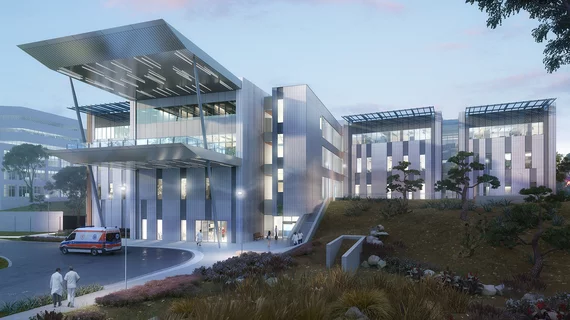When UC San Diego Health introduced its expanded Comprehensive Breast Health Center this spring, Haydee Ojeda-Fournier, MD, medical director of breast imaging, got right to the point for the press covering the development. She emphasized that the informal reopening had doubled the capacity of an existing program and that the center now houses an integrated suite of numerous advanced-imaging technologies all under one roof.
“Whatever the patient’s breast type, we have an incredible collection of technologies that can detect calcifications that are micron in size or tumors that are millimeters in size,” Ojeda-Fournier said. To back up the point, she checked off some of the major imaging technologies the center now has at its disposal: five new 3D-capable mammography units plus ultrasound, MRI, molecular imaging and image-guided biopsy suites.
In addition, Ojeda-Fournier spotlighted the center’s team of intensively trained technologists and its subspecialized radiologists’ readiness to explain results in comfortable consultation rooms. “For patients coming for their annual screening mammogram, we are efficiently set up so that patients are in and out in six to 10 minutes,” she said. “Our goal is always to make the scans as easy as possible.”
As it turns out, that goal would be out of reach if not for a group of dedicated IT and informatics staffers working behind the scenes. During the spring celebration, they may have gone unsung—but they’re anything but unappreciated by Ojeda-Fournier and her patient-facing colleagues.
The recognition was evident in UC San Diego Health’s reliance on its IT professionals when it was still planning the center, which is part of a $1.3 billion investment it has made in the 156,000-square-foot Koman Family Outpatient Pavilion. To best utilize their state-of-the-art imaging capabilities, Ojeda-Fournier and other members of the technology team knew they also needed a dedicated breast imaging PACS to serve as the center’s primary imaging interface.
For Scott Coberly, manager of imaging informatics, the addition of a dedicated PACS spoke “volumes.” “Because the volumes at UC San Diego Health are expanding, and the patient population is ever-expanding, our radiologists have more and more work and less time to do it,” he says.
In an interview with imagingBiz, Coberly recalls how the Comprehensive Breast Health Center onboarded breast imaging PACS in the summer of 2017, when they needed a single-workstation solution for radiologists to view all breast-imaging studies all at once and across all imaging modalities. Where patients are a priority, technology is too.
Supporting expansion
“We’ve been expanding our Epic [EMR] footprint in a single environment across multiple UC San Diego Health sites, so we can have a single interface across all those sites,” Coberly says. “And as we do that with Epic, we’re looking to expand our other clinical tools that we have across those sites as well.”
Thus, the expanded breast-health center was both a driver and a receiver of UC San Diego Health’s ongoing EMR consolidation. When the center ended up doubling in size it needed a new PACS solution.
Ojeda-Fournier read up on the current state of PACS via white papers and journal-published literature and sought input from her clinical associates in breast imaging. Her focus was improving workflow and outcomes by moving away from reviewing images on multiple workstations in favor or a single workstation with layouts and hanging protocols that enable their radiologists to identify masses in the breast as efficiently as possible.
“Being able to provide a single solution and one workstation for our radiologists to read breast imaging improves workflow,” he says. “Having one solution allows the radiologists to read breast MRIs, breast ultrasounds and all mammography studies off of a single work list.”
They also were better able to handle high-volume screening data, support advanced diagnostic workflows and scale to size as the provider grows its patient volumes and adds service lines.
Meeting goals
From a clinical perspective, the PACS uniquely offered a hanging protocol allowing bilateral views spanning three prior studies. “The radiologist can have three studies side by side as he or she is running through the tomo sequences,” he says, adding that research has shown this to be the best way to see progression or regression of changes in the breast over time.
Also key was tight integration with UC San Diego Health’s VNA and EMR, with the compatibility across systems helping the institution avoid a whole lot of extra cost.
It was Ojeda-Fournier who also wanted the ability to view any and all relevant priors—including non-mammography studies—within the same screen.
Coberly underscores that, when considering any technology, all radiologists at UC San Diego Health hold out “efficiency-boosting potential” as a top priority.
“It is the reduction in the number of clicks it takes to present studies to the physician that allows he or she to read most efficiently,” Coberly says. “That’s what we’ve found with PACS.”

